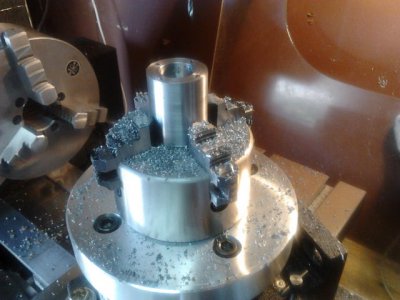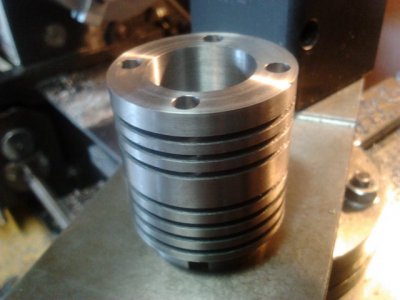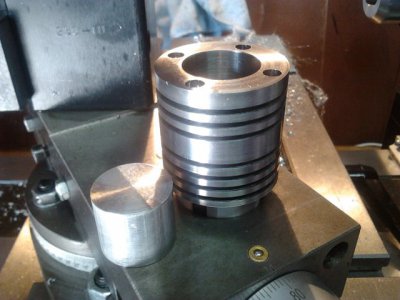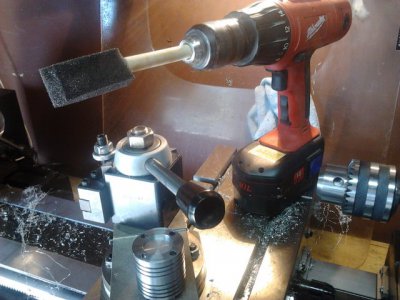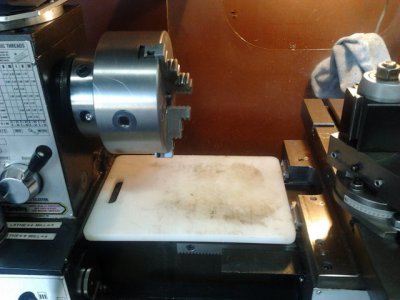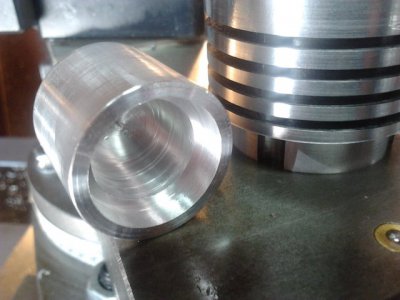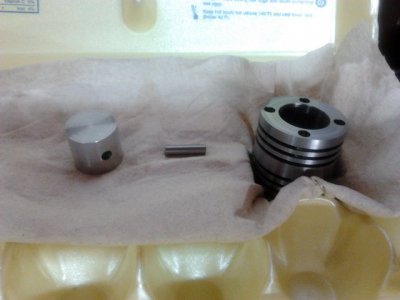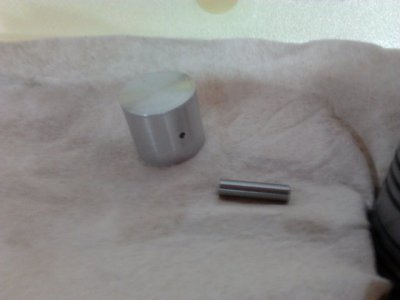This is probably jumping in a bit too deep, But the other day after wanting to build a engine of some sort for a while, And having a hard time locating a kit or plans that really appealed to me, I decided to sketch something out and just go for it! I've always had a hard time conforming to "spec" anyway! 8) There has already been some design changes from my sketch, But I made modest accomplishment on the cylinder yesterday. The engine will be a model airplane type design , Although I'm not sure it won't end up way to heavy to put in a model. Its pretty likely I will make a glow plug head to initially get it running, But my intention is for it to be a "Diesel" (model airplane semi-diesel type with contra-piston in head) Displacement will be .45 CuIn. With a 7/8 bore and 3/4 stroke. If anyone sees anything that will be a obvious problem let me know, Although I don't want to nit-pick it to the point where I should just totally redesign and start over. I want to get it together and learn some skills...maybe itll run, maybe not? :tounge: I think I should have the cylinder completed this weekend, And can maybe get started on the piston. I'm taking a break right now and tearing apart some of my model engines to try to measure port timing events and port sizes, as I'n not certain on that yet. Thanks for looking! Todd And no, That tiny boring bar didn't work out. I changed to a 5/8 one after hearing the extreme chatter. 
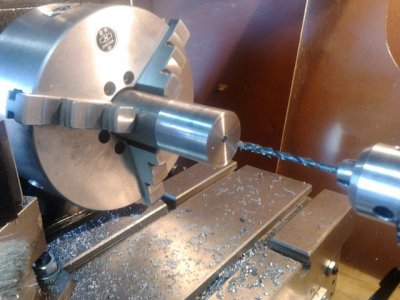
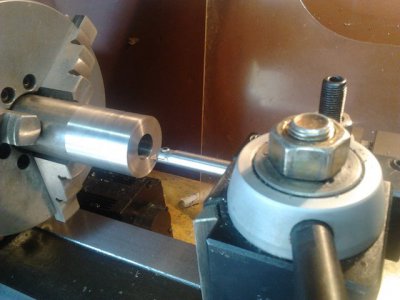
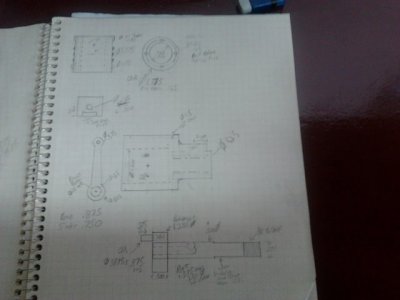



Last edited by a moderator:


